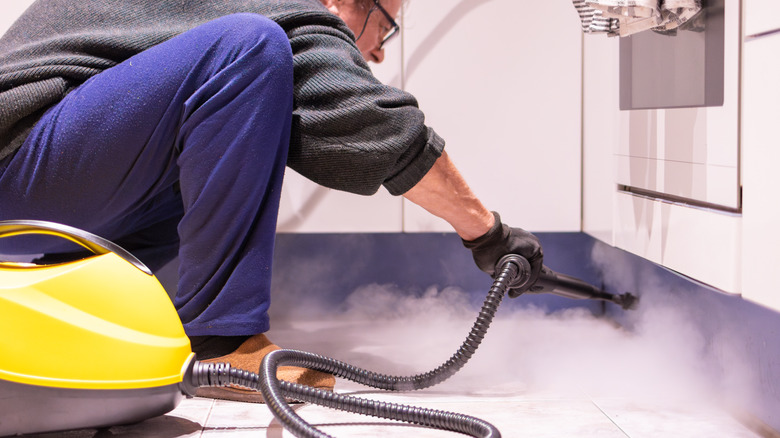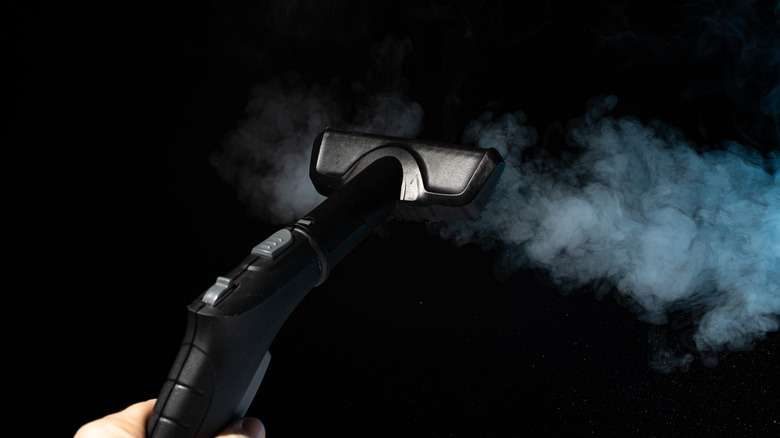Steam Cleaning May Disinfect Your Surfaces, But Not In The Way You Think
Steam cleaners are a wonderful invention and a valuable natural cleaning solution for countertops, floors, and other surfaces. There are no harmful chemicals involved, and a steam clean makes quick work of any messes. But when it comes to claims that steam cleaners can kill germs, is there any truth to the marketing hype?
Heat and steam do indeed kill viruses, but when it comes to disinfecting your surfaces, a steam cleaner may not be the most practical way to go about things. Germs start to be fully eliminated at temperatures between 175 and 212 degrees Fahrenheit if that heat is sustained for a period of time. Steam cleaners can reach these temperatures, but that is also one of the dangerous downsides of a steam cleaner, as it makes it very easy to accidentally get burned. And although studies have shown that steam cleaning can be as effective as a two-step cleaning process with water and disinfectant, there is a catch. You'll need to press a steam cleaner or mop continuously against the surface being disinfected for several minutes at a high temperature to kill household germs.
There are more effective ways to disinfect your surfaces
Prolonged contact with surfaces does allow steam to kill germs, including viruses, with most manufacturers providing detailed information on the contact time and temperatures needed for a successful clean. However, you'll need to avoid certain areas when steam cleaning your home this way. Some types of flooring or counters, such as wood, bamboo, laminate, or natural stone, can be damaged by steam cleaning. Hardwood floors in particular require special and delicate care and are susceptible to moisture and heat, both of which are central to steam cleaning.
Although steam cleaning is highly effective, you may find that you get quicker and safer results with other products. A diluted bleach solution or a disinfectant product combined with water will kill germs as long as it's left on a surface for the length of time specified in the instructions. Look for an EPA-registered disinfectant, which will have an EPA registration number on the label. However, it's also worth noting that simply cleaning with soap and water will remove the majority of nasty, everyday viruses and bacteria from surfaces. You will need to make sure to use hot, soapy water, along with a little elbow grease, to ensure surfaces are completely clean. But this is a quicker solution than steam cleaning, and it's also far less risky to delicate surfaces and floors.

